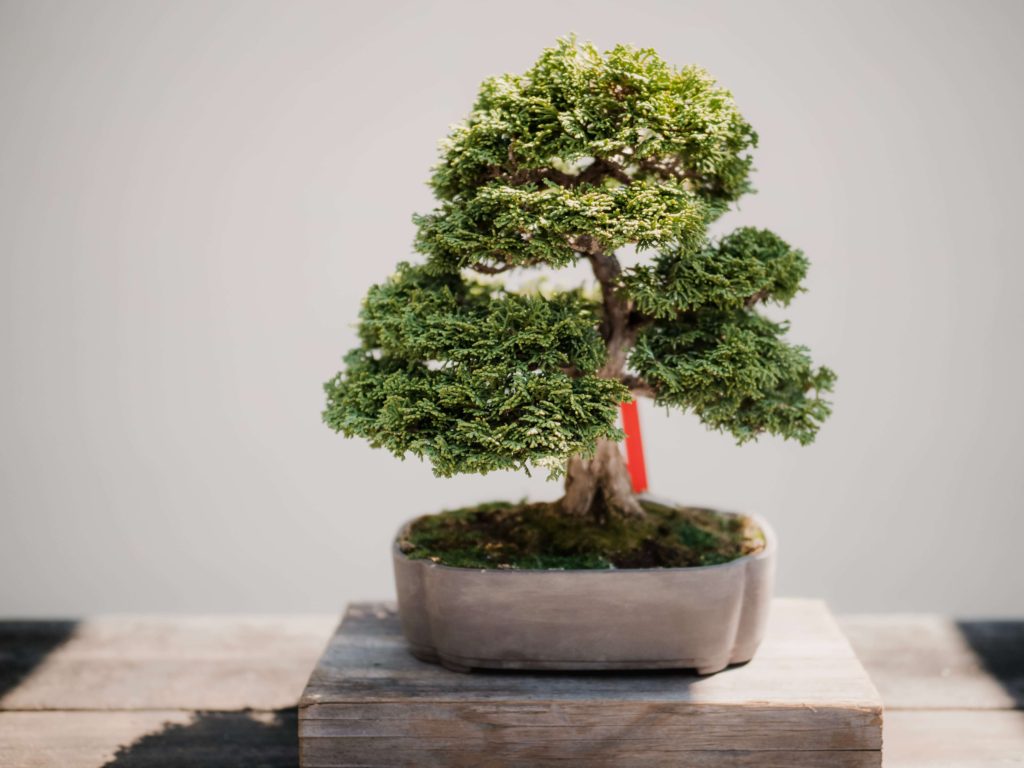Zen Koans
What Is A Zen Koan?
A Koan is a short story or dialogue used in Zen practice. They were traditionally used by Zen teachers to test the “progress” of a student. In modern Zen, Koans are often used in conjunction with meditation practice and formal Sanzen or Dharma interviews. They are meant to focus the mind on the central questions of Zen by creating “great doubt”.
- Who Am I?
- What Is This?
- What Is The One True Thing?
These questions are unanswerable. And that’s kind of the point.
Koan study, whether independently or with a teacher, is part of becoming comfortable with the unanswerable.

Example Of A Zen Koan:
“Mu” is one of the most common Koans you might come across in Zen practice:
A monk once asked Jo Ju, “Does a dog have Buddha-nature?” Jo Ju answered, “Mu!” (No)
That’s it. Does a dog have Buddha-nature? What does that even mean? Koans will often be accompanied by commentary. A teacher or Zen-master will provide their interpretation of the passage.
Zen Master Seung Shan of the Kwan Um School of Zen said the following about “Mu”:
1. Buddha said everything has Buddha-nature. Jo Ju said a dog has no Buddha-nature. Which one is correct?
2. Jo Ju said, “Mu!” What does this mean?
3. I ask you, does a dog have Buddha-nature?
From Zen Master Seung Sahn’s Twelve Gates.
Want to Hear More From Being Zen?
Analyzing a Koan
So what does the Koan mean?
There is really no right answer. Does a dog have Buddha nature? Yes and no are both correct and incorrect. Zen teachers often say that the point of a Koan is to feel the meaning in the essence of your being, rather than in your mind.
Some say the main takeaway of Mu is that silence is the nature of the Buddha. A dog barks, and thus does not have the nature of the Buddha.
That’s one possible interpretation.
But rather than thinking and trying to solve the riddle, Koan study aims to make the student comfortable with not-knowing. “Don’t know mind” or “great doubt” is what some schools of Zen call the absence of thinking. Meditating brings us closer to “don’t know mind”. To the moment before thinking. Koan practice can also bring us closer to don’t know mind.
So rather than trying to solve the Koan, we try to understand that there is no answer. We try to feel the absence of an answer.
It’s kind of confusing, right?
I’ve always thought so.
But there’s something to it.

Koan Interviews
If you ever get the chance to attend a Zen meditation retreat, you might have the opportunity to sit for a Koan interview. During a formal Koan interview, the teacher will present the student with a passage to contemplate. The teacher will then “asses” the student’s progress.
During my first formal interview, I was discussing a simple Koan with the teacher, when all of a sudden he slapped his leg, making a loud, startling sound.
“When I slapped my leg and we both heard that sound, neither one of us was thinking,” the teacher explained. “We were just hearing.”
“That is Zen” he went on. “The moment before thinking, when we are all one.”
That explanation resonated with me.
So Koan study can be a part of that moment before thinking. You can analyze as much as you want, but you’re never going to “solve” the puzzle. But when you feel the Koan in your being, you are coming closer to the moment before thinking.
The History Of Zen Koans
The term kōan is the Japanese translation of the Chinese word “gong’an”, which means, literally, “public case.” Early Kōans can be compared to case law and judicial precedent. Stories were passed down among generations and used to test a student’s understanding of principles.
Gong’ans first appeared during the Tang dynasty (618-906 AD), as Zen Masters recorded their stories and commented upon the tales of others. Once a passage had been formally commented upon by a Zen master, it officially became a Koan (or Gong’an). Early Koans were derived from East Asian “literary games”, breaking down longer works and dialogues into well-edited, succinct passages.
The use of Gong’ans experienced another shift during the Song dynasty (960-1297 AD). Zen Master Dahui Zonggao established the art of kan
A few of the most well-known original Koan texts include:
- The Gateless Gate by
Wumen (1183-1260). - The Book of Equanimity by Hongzhi Zhengjue (1091-1157).
- The Blue Cliff Record by Yuanwu Keqin (1063-1135).
- Mana Shobogenzo by Eihei Dogen (1200-1253)

Koans In Modern Zen Practice
In contemporary Zen practice, introspective Koan practice is still predominant. Formal interviews and curriculum are still used in some teachings as well, but the precise function and importance placed on Koan study will vary from school to school. Most often, there will be a blend of introspective study and formal practice with a teacher.
Some schools—like the Boston School of Zen, for example—have a formal Koan curriculum. When practicing with the school, you study a sequence of Koans or spend time analyzing one particular writing (such as “Mu”).
Ultimately, studying Koans is a personal choice. Some find the practice to be a pathway to “Buddha mind”. Others find it tedious and confusing. But if nothing else, if you’re interested in Zen practice, it’s worth reading a few to understand what Koans are all about.
Keep In Touch
More Examples Of Zen Koans
There are countless examples of Koans to study. It can be overwhelming to decide where to start! Below are some of our favorite Koan examples. Click on the link for the full text.
Dizang asked Xiushan, “Where do you come from?”
Xiushan said, “From the South.”
Dizang said, “How is Buddhism in the South these days?”
Xiushan said, “There is extensive discussion””
Dizang said, “How can that compare to me here planting the fields and making rice to eat?”
Xiushan said, “What can you do about the world?”
Dizang said, “What do you call the world?”
Nan-in, a Japanese master during the Meiji era (1868-1912), received a university professor who came to inquire about Zen.
Nan-in served tea. He poured his visitor’s cup full, and then kept on pouring.
The professor watched the overflow until he no longer could restrain himself. “It is overfull. No more will go in!”
“Like this cup,” Nan-in said, “you are full of your own opinions and speculations. How can I show you Zen unless you first empty your cup?”
Two monks were arguing about the temple flag waving in the wind.
One said, “The flag moves.”
The other said, “The wind moves.”
They argued back and forth but could not agree.
Hui-neng, the sixth patriarch, said: “Gentlemen! It is not the flag that moves. It is not the wind that moves. It is your mind that moves.”
The two monks were struck with awe.
— Unknown
Dizang asked Fayan, “Where are you going?”
Fayan said, “I am wandering aimlessly.”
“What do you think of wandering?”
“I don’t know.” “Not knowing is most intimate.”
Fayan was suddenly awakened.
As Shakyamuni meditated beneath the bodhi tree, Mara pointed to the place where he sat and demanded, “Who witnesses your right to the seat of enlightenment?”
Shakyamuni reached a finger down to touch the ground. “I call the Earth as my witness,” he replied.
Kyogen said, “It (Zen) is like a man (monk) hanging by his teeth in a tree over a precipice. His hands grasp no branch, his feet rest on no limb, and under the tree another man asks him, ‘Why did Bodhidharma come to China from the West (India)?’ If the man in the tree does not answer, he misses the question, and if he answers, he falls and loses his life. Now what shall he do?”
— The Gateless Gate, Case 5
Chao Chou, teaching the assembly, said, “The Ultimate Path is without difficulty; just avoid picking and choosing.
As soon as there are words spoken, this is picking and choosing,”this is clarity.”
This old monk does not abide within clarity; do you still preserve anything or not?”
At that time a certain monk asked, since you do not abide within clarity, what do you preserve?
Chao Chou replied, don’t know either.”The monk said, “Since you don’t know, Teacher, why do you nevertheless say that you do not abide within clarity?”
Chao Chou said, It is enough to ask about the matter; bow and withdraw.”
Attention! Master Jizo asked Hogen, “Where have you come from?” “I pilgrimage aimlessly,” replied Hogen. “What is the matter of your pilgrimage?” asked Jizo. “I don’t know,” replied Hogen. “Not knowing is the most intimate,” remarked Jizo. At that, Hogen experienced great enlightenment.
— The Book of Equanimity, Case 20
A man came into the Zen Center smoking a cigarette, blowing smoke in the Buddha-statue’s face and dropping ashes on its lap. The abbot came in, saw the man, and said, “Are you crazy? Why are you dropping ashes on the Buddha?” The man answered, “Buddha is everything. Why not?” The abbot couldn’t answer and went away.
— Twelve Gates, Case 6